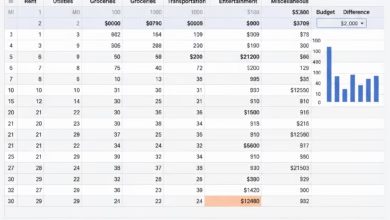Learn the differences between HMO, PPO, and EPO health plans
Are you familiar with HMO, PPO, and EPO plans?

Navigating the world of health insurance can feel like trying to decipher a secret code. During Open Enrollment, you’re bombarded with an “alphabet soup” of plan types: HMO, PPO, EPO, and more. Making the wrong choice can lead to thousands of dollars in unexpected bills or prevent you from seeing the doctors you trust.
This guide is designed to demystify these terms. We will break down exactly what HMO, PPO, and EPO plans are, how they work, and the critical financial implications of each. By the end, you’ll be able to confidently compare plans and select the one that offers the best balance of cost and flexibility for your specific needs.
Before we dive in, let’s define the one term that governs all these plans: the provider network. A network is simply a group of doctors, hospitals, and other healthcare providers who have a contract with your insurance company to provide services at a pre-negotiated, discounted rate. The primary difference between these plans is how they force (or allow) you to use that network.
What is an HMO (Health Maintenance Organization) Plan?

An HMO, or Health Maintenance Organization, is often the most budget-friendly option. It’s designed around a “gatekeeper” model to manage and coordinate your care, which in turn controls costs.
The Role of Your Primary Care Physician (PCP) in an HMO
When you enroll in an HMO, you are almost always required to select a Primary Care Physician (PCP) from within the plan’s network. This doctor is your main point of contact for all your health needs.
Think of your PCP as the quarterback of your healthcare team. If you get sick, you call them first. If you need to see a specialist, like a dermatologist or a cardiologist, you can’t just make an appointment. You must first visit your PCP, who will then give you a referral to a specialist within the HMO’s network.
This gatekeeper system is a hallmark of the HMO. If you see a specialist without a referral from your PCP, the insurance company will not pay for the visit, and you will be responsible for 100% of the bill.
Understanding HMO Network Restrictions
HMOs are the most restrictive when it comes to networks. With very few exceptions, HMOs do not cover any out-of-network care. If you decide to see a doctor who is not in the HMO’s network (and it’s not a life-threatening emergency), you will pay for the entire service yourself.
The only real exception is a true, life-or-limb-threatening emergency. If you are having a heart attack, you can go to the nearest emergency room, whether it’s in-network or not. However, your follow-up care and hospital admission, once you are stabilized, will likely need to be at an in-network facility.
The Cost Structure of an HMO: Premiums and Copays
The biggest “pro” of an HMO is the cost. Because the plan has so much control over your care and uses a strict network, HMOs typically have:
- The lowest monthly premiums.
- Low (and often $0) deductibles.
- Simple, predictable copayments for doctor visits and prescriptions (e.g., $25 for a primary visit, $50 for a specialist).
You rarely have to deal with coinsurance (where you pay a percentage of the bill). The financial side is straightforward, which is highly appealing for those on a tight budget.
Who is an HMO Plan Best For?
- Individuals and families who are budget-conscious and want the lowest, most predictable monthly costs.
- People who are generally healthy and mostly need preventive or basic care.
- Anyone who doesn’t mind having a single PCP coordinate their healthcare and is willing to get referrals to see specialists.
- People who have confirmed that their preferred doctors and local hospitals are all within the HMO’s network.
What is a PPO (Preferred Provider Organization) Plan?

A PPO, or Preferred Provider Organization, is built on one word: flexibility. It is one of the most popular plan types precisely because it gives members the most control over their healthcare choices, but that flexibility comes at a higher price.
The Freedom of Choice: In-Network vs. Out-of-Network Care
Unlike an HMO, a PPO gives you coverage for care both in-network and out-of-network.
- In-Network: You get the best, lowest rates by visiting “preferred” providers (the ones in the PPO’s network). You’ll have lower copays and your deductible will be smaller.
- Out-of-Network (OON): You have the freedom to visit any doctor or hospital you want, even if they don’t have a contract with your insurer. However, you will pay significantly more. PPO plans often have a separate, much higher deductible for OON care, and instead of a simple copay, you’ll pay a percentage of the bill (coinsurance), which is often 40-50% of the “allowed amount.”
Do You Need a PCP or Referrals with a PPO?
No. This is the PPO’s other major selling point.
- You are not required to designate a PCP.
- You do not need referrals to see specialists.
If you wake up with a skin issue, you can call a dermatologist directly. If you have knee pain, you can make an appointment with an orthopedist. This direct-access model saves you time and the hassle of an extra doctor’s visit, which is a major convenience.
Analyzing PPO Costs: Premiums, Deductibles, and Coinsurance
This flexibility isn’t free. PPOs are almost always one of the most expensive plan options. Compared to an HMO, a PPO typically has:
- The highest monthly premiums.
- Higher deductibles that you must meet before the plan starts paying for many services.
- More complex cost-sharing. You will likely have both copays (for simple visits) and coinsurance (for more complex services or hospital stays).
Managing your costs with a PPO requires you to be a more active consumer, checking to see if providers are in-network and understanding how your deductible and coinsurance work together.
Who is a PPO Plan Best For?
- People who want the freedom to see specialists without getting a referral.
- Individuals who have specific, trusted doctors they want to keep seeing, even if they are (or might become) out-of-network.
- Families or individuals who travel frequently and want peace of mind knowing they have OON coverage anywhere in the country.
- Anyone willing to pay a higher monthly premium in exchange for maximum flexibility and convenience.
What is an EPO (Exclusive Provider Organization) Plan?

An EPO, or Exclusive Provider Organization, is a hybrid plan that tries to blend the cost savings of an HMO with the convenience of a PPO. It’s a “best of both worlds” model, but it comes with one very important catch.
The EPO Middle Ground: PPO Flexibility with HMO Restrictions
Here’s how an EPO works:
- Like a PPO: You are not required to choose a PCP.
- Like a PPO: You do not need referrals to see specialists. You have direct access to any doctor in the plan’s network.
- Like an HMO: You have no coverage for out-of-network care (except in a true emergency).
The Financial Risk of EPO Out-of-Network Care
This last point is the critical “gotcha” of an EPO plan. The network is “exclusive.” If you see a provider who is not in the EPO network, you will be responsible for 100% of the bill. There is no OON benefit like there is with a PPO.
This makes it absolutely essential to check the EPO’s provider directory before you enroll. Because you don’t have a PCP managing your care, it’s your responsibility to ensure that any specialist you decide to see is in-network.
EPO Cost Analysis: A Balance of Premiums and Network Size
The cost of an EPO plan usually falls somewhere between an HMO and a PPO.
- Premiums: Generally lower than a PPO but higher than an HMO.
- Out-of-Pocket Costs: Deductibles and copays are also typically in a middle-ground range.
The value of an EPO depends entirely on the size of its network. Some EPOs have large, national networks that are just as good as a PPO’s, making them a fantastic value. Others have very small, localized networks, making them as restrictive as an HMO but without the “gatekeeper” to help you.
Who is an EPO Plan Best For?
- People who want to save money on premiums (compared to a PPO) but strongly dislike the referral process of an HMO.
- Individuals who are diligent and willing to always check the provider network before making an appointment.
- People who have confirmed their preferred doctors and hospitals are in the EPO network and don’t anticipate needing OON care.
Side-by-Side Comparison: HMO vs. PPO vs. EPO at a Glance
This table breaks down the key differences in a way that’s easy to compare.
| Feature | HMO (Health Maintenance Organization) | PPO (Preferred Provider Organization) | EPO (Exclusive Provider Organization) |
| PCP Required? | Yes. You must select an in-network PCP. | No. You are not required to have one. | No. You are not required to have one. |
| Referrals Needed? | Yes. Your PCP must give you a referral for all specialist care. | No. You can see any specialist directly. | No. You can see any specialist directly. |
| In-Network Coverage | Yes. This is the core of the plan. | Yes. You get the best rates and lowest costs. | Yes. This is the core of the plan. |
| Out-of-Network Coverage | No. (Except for true emergencies). | Yes. But you pay a much higher share of the cost. | No. (Except for true emergencies). |
| Typical Premium Cost | Low ($) | High ($$$) | Medium ($$) |
| Typical Out-of-Pocket Cost | Low ($) | High ($$$) | Medium ($$) |
| Best For… | Budget-conscious people who want simple costs. | People who want maximum flexibility and choice. | People who want a balance of cost and direct access. |
Beyond the “Big Three”: What About POS Plans?
To make things slightly more confusing, you might also see a POS (Point of Service) plan. A POS plan is another hybrid, but it mixes features differently than an EPO.
- Like an HMO: It usually requires you to have a PCP who manages your care.
- Like an HMO: You need referrals from your PCP to see specialists.
- Like a PPO: It offers coverage for out-of-network care.
Essentially, a POS plan is an HMO that allows you to go out-of-network if you choose, but you’ll pay much more for it. Your PCP is still the “point of service” who directs your care. These plans are less common today, as PPOs and EPOs have become more popular, but they still exist as an option that bridges the gap between the strict HMO and the flexible PPO.
Key Health Insurance Terms You Must Know (Glossary)

To truly compare plans, you have to speak the language. Understanding these financial terms is more important than the plan “letter” itself.
- Premium: This is your fixed monthly bill, like a subscription fee, that you pay to the insurance company just to have the plan. You pay this whether you use any healthcare services or not.
- Deductible: This is the amount of money you must pay out-of-pocket for covered health services before your insurance plan starts to pay. For example, if your deductible is $3,000, you pay the first $3,000 of your (non-copay) medical bills. After that, you move on to…
- Coinsurance: This is your share of the costs of a covered health service, calculated as a percentage (e.g., 20%). This kicks in after you’ve met your deductible. If your plan has 20% coinsurance and you have a $1,000 bill after meeting your deductible, the insurer pays $800 (80%) and you pay $200 (20%).
- Copay (Copayment): This is a fixed amount (e.g., $30) you pay for a covered service, usually when you get the service. On many plans, copays for standard doctor visits are not subject to the deductible, which is a major benefit.
- Out-of-Pocket Maximum (OOPM): This is the most important number for your financial planning. It is the absolute most you will have to pay for covered services in a plan year. This amount includes your deductible, copayments, and coinsurance. Once you hit this number, the insurance plan pays 100% of the costs for all covered, in-network services for the rest of the year. This number is your total financial exposure.
How to Choose the Right Plan for Your Financial Situation
There is no single “best” plan. The best plan is the one that matches your unique health needs and financial situation. Let’s walk through a few common scenarios.
Scenario 1: You are Young, Healthy, and Budget-Conscious
- Your Profile: You’re in your 20s or 30s, rarely get sick, and have no chronic conditions. Your main goal is to have coverage for a major accident while keeping your monthly bills as low as possible.
- Financial Analysis: Your priority is a low premium. You don’t expect to see many specialists, so the referral process of an HMO isn’t a major burden.
- Potential Best Fit: An HMO is likely your most cost-effective option. You get low premiums and predictable copays for the few times you need a doctor. A high-deductible EPO could also work if the premium is low enough.
Scenario 2: You Have a Chronic Condition or See Specialists Often
- Your Profile: You have a condition like diabetes or Crohn’s disease, or you need regular care from a specific cardiologist and rheumatologist. You know you will have many doctor visits and prescription costs.
- Financial Analysis: Your flexibility and access to specific doctors are paramount. You will likely hit your deductible and out-of-pocket maximum regardless of the plan. The referral process of an HMO would be a constant, time-consuming hassle.
- Potential Best Fit: A PPO is often the best choice here. The higher premium is a “convenience fee” for direct access to the specialists you need. It also gives you the freedom to go out-of-network to see a leading expert in your condition if necessary.
Scenario 3: You Have a Family with Young Children
- Your Profile: You have a spouse and two young kids. Kids get sick unpredictably and sometimes need specialists (allergists, ENTs, etc.) on short notice.
- Financial Analysis: You need a balance of cost and convenience. While an HMO is cheapest, getting a referral every time a child needs to see a specialist can be frustrating.
- View 1 (Flexibility): A PPO offers the most convenience. When your child has an ear infection, you can go straight to an ENT.
- View 2 (Cost-Savings): An EPO can be a great compromise. You get the direct specialist access of a PPO but with lower premiums. You just have to be 100% sure that the local pediatric hospital and all your preferred pediatricians are in the “exclusive” network.
Scenario 4: You Want to Save for Retirement (HSA-Compatible Plans)
- Your Profile: You are financially savvy and want to use a Health Savings Account (HSA) as a retirement and investment tool. An HSA offers a “triple-tax advantage” (tax-free contributions, tax-free growth, tax-free withdrawals for medical).
- Financial Analysis: To contribute to an HSA, you must be enrolled in a High Deductible Health Plan (HDHP). The key is that an HDHP is not a separate plan type; it’s a financial structure. You can find HMO, PPO, and EPO plans that are all HDHP-qualified.
- Potential Best Fit: Your choice will be an HDHP-qualified PPO or EPO. These plans give you the flexibility to manage your care while allowing you to contribute to the most powerful savings account available. You will be responsible for 100% of your costs (except for some preventive care) until you meet the high deductible, but you can pay for those costs using your tax-free HSA funds.
Don’t Forget the Details: What to Check Before You Enroll

Before you click “submit” on any plan, you must do this homework.
- Check the Provider Directory (The “Network”).
- This is non-negotiable. Do not assume your doctors are in-network.
- Use the insurance company’s online search tool and look up every single doctor you and your family see, from your primary physician to your dentist and eye doctor.
- Look up your preferred local hospital and urgent care centers.
- If you’re considering an HMO or EPO, this step is 10-times more important.
- Check the Drug Formulary (The “Prescription List”).
- A formulary is the list of prescription drugs covered by your plan.
- If you take regular medications, look them up.
- Check what “tier” they are on. Tier 1 (generics) will be cheapest; Tier 4 (specialty drugs) can be extremely expensive. A plan that covers your $500/month medication on Tier 2 is financially superior to a plan that puts it on Tier 4.
- Read the Summary of Benefits and Coverage (SBC).
- By law, every plan must provide this standardized, easy-to-read document.
- It clearly lists the deductible, out-of-pocket maximum, and your copay/coinsurance for common services (e.g., “Specialist Visit,” “Emergency Room Care”).
- This document cuts through all the marketing and is your single best tool for comparing the true costs of a plan.
Making the Final Decision
The choice between an HMO, PPO, and EPO comes down to a fundamental trade-off: Cost vs. Flexibility.
- An HMO offers the lowest costs and simplest financial model but demands you give up all flexibility and follow a strict “gatekeeper” process.
- A PPO offers maximum flexibility, allowing you to see any doctor without referrals, but charges the highest premiums and has more complex cost-sharing.
- An EPO tries to find a happy medium, offering the direct-access convenience of a PPO but with the “in-network only” cost-saving restriction of an HMO.
There is no right answer. Review your finances, consider your family’s health history, and—most importantly—check the network and drug formulary. Taking a few hours to do this research during Open Enrollment can save you thousands of dollars and countless headaches in the year ahead.





